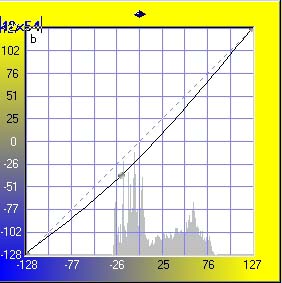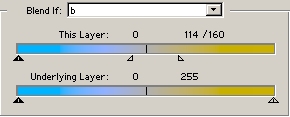
This page shows how one can apply Lab Saturation in two moves, in Photoshop, to really give an image some impact in different areas - or just a single pass in CurveMeister (an excellent curving plug-in to Photoshop). I will show the conventional approach first and then doing it with CurveMeister.
With any image, I think it is important to first work out what you want to do with it. In this case I wanted to turn a dull photo into a really colourful one with a lovely deep blue sky.
Here is the original image - moderately dull
colours, but with a full tonal range.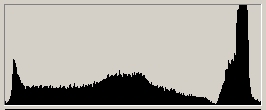
I should really apply a bit of contrast, using Curves - but this is about Colour, so we'll skip that step. |
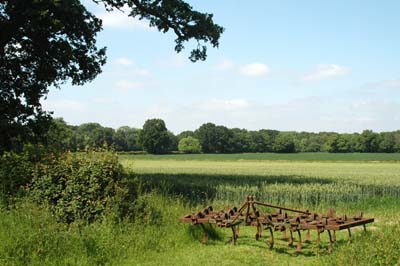 |
| Here I have just applied my standard LabColourSaturation
Action (which creates a new layer) and then reduced the Opacity to 82% -
quite an improvement for 2 mouse clicks!
Now we need to play with the sky. I need to stay in Lab mode for the second saturation to improve the sky, by darkening it and give it a bit more colour. So I create a second Curve Adjustment layer and played with the L and b channels. |
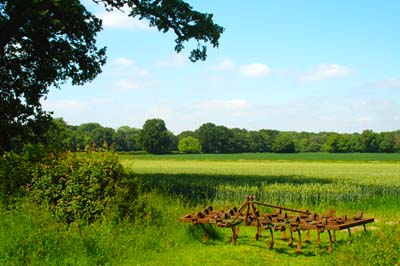 |
Here is the L curve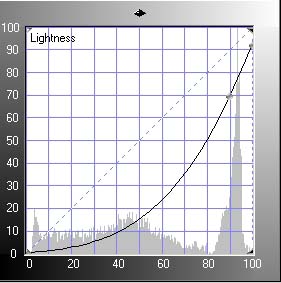 |
and just a touch of blue colour change |
| Now we have a lovely sky, but the rest of the
image is not exactly what we want!
So we need to limit the change to just the sky. One could try creating a Mask, but it is much quicker and simpler using the BlendIF feature for both channel changes. (Double click to the right of the adjustment layer to bring up the Layer Style dialog to get to the BlendIF adjustment at the bottom of the window.) Here is what I did for the two channels... |
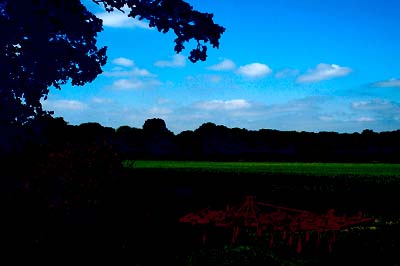 |
The L channel, protecting the darker areas of
the image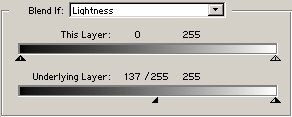 |
and the b channel limiting the colour change |
| I think of the top (This Layer of BlendIF) as a line of bricks that will fall
down on to the layer beneath unless you move the sliders inwards to stop them -
the bottom (underlying layer) as a row of eggs which will get smashed
unless you protect them by moving their sliders inwards. You can mitigate
the effect by splitting the sliders (using the Alt key) to make a smooth
transition. So with 6 sliders (2 per channel) you have a lot of control
over how the top layer will change the image.
|
|
| So the final image looks like this...
Note there is a slight difference in the sky between the previous image and this one because of the BlendIF changes. I think the change is quite dramatic for such little effort - something like a dozen mouse clicks! I hope this gives you ideas about how easy it is to make changes in Lab colour mode and the power of BlendIF. |
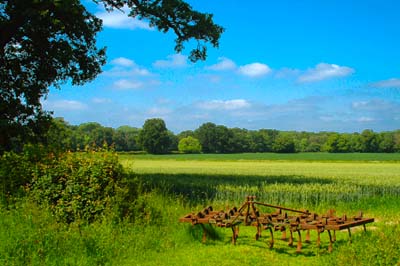 |
Just to finish off let see how we can do this in CurveMeister with a Mask.
| We want to adjust the sky differently from the rest of the image, so the Lab b channel is an obvious starting point - and here it is... | 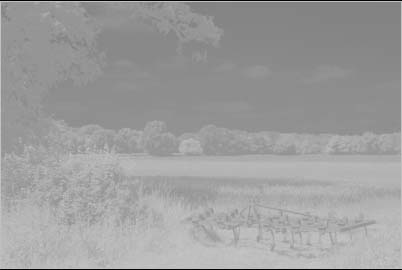 |
| The sky is has a lot of blue in it and is therefore dark in the b channel, but we want the opposite if we want a Mask - so inverting it becomes... | 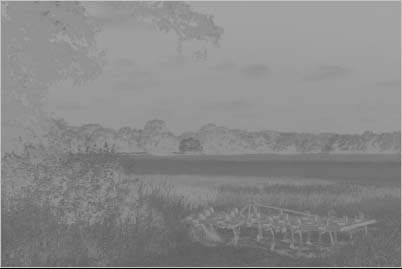 |
| But we want the sky area to be white, to let our a
and b channel saturation and L curve to have the maximum
effect.
We therefore apply the bottom right curve to this inverted b channel mask to let the right amount of normal curving shine through with the whooping saturation curve in the a and b channels. Just looking at the mask, it becomes like this. |
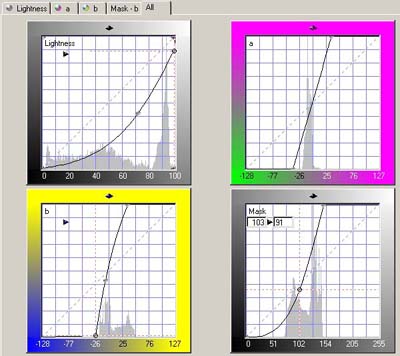 |
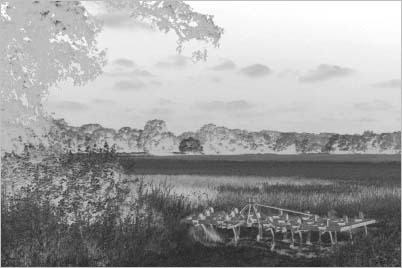 |
The nice thing about doing this in CurveMeister is that is
all visually interactive. One has a vague idea of what the mask
should look like, but you don't have to see it - just play with the mask
curve and watch how the image changes.
However with my quick experiment of doing the change in one pass, one does not quite have the same control as the conventional two passes, but hopefully this demonstrates the power of curving with interactive masks - one can adjust any of the channels and mask without having to go back and forth between layers. |
So one can use Masks or BlendIFs - which is easier/best? The main disadvantage of Masks (slightly removed by the interactive nature of CurveMeister) is that you have to pre-visualise what the effect will be. BlendIF slides on the other hand, especially in Lab, are easier to play with as they are interactive and fairly easy to understand.
Of course BlendIFs and Masks are not normally interchangeable, especially in rgb, but it is worth playing and getting use to both facilities so you can use the best tool for a particular effect. One of the real problems I find with Photoshop is that you can do the same thing in a number of ways and do not necessarily know which is the best, but on the upside we can use the tool that best suits how we think about colour and tone.
